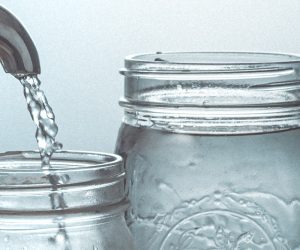
Pursed Lip Breathing Benefits for Better Lung Function (Plus How to Do It)
Christine Ruggeri, CHHC via Dr. Axe – For people struggling with dyspnea, or difficulty breathing, a technique called pursed lip breathing is often used to improve oxygenation. Imagine you’re blowing out the candles on your birthday cake while slowly exhaling — it may look a little strange, but this breathing exercise actually removes stale air from your lungs.
If you’re looking to strengthen your lungs with this air trapping technique, practice breathwork at least 10 minutes a day and notice the difference.
What Is Pursed Lip Breathing?
Pursed lip breathing is a technique that allows you to control your oxygenation and ventilation. It’s done by breathing air in through the nose and exhaling through the mouth with a slow, controlled flow.
During the exhale, which is drawn out, your lips are puckered or pursed, which is done for good reason.
When your lips are pursed and exhalation is drawn out, it stimulates the autonomic nervous system and promotes relaxation. This has been shown to optimize lung mechanics and exercise tolerance among adults with dyspnea.
It works by removing stale air that can become trapped in the lungs, and it decreases the amount of breaths you take in an effort to get enough oxygen.
Normally, when a person exhales, the diaphragm relaxes and forces air out of the lungs. When the diaphragm is weak and doesn’t function properly, stale air becomes trapped in the lungs and won’t allow room for fresh air that contains oxygen.
This leads to shortness of breath and trouble breathing.
Pursed lip breathing for asthma, dyspnea and other lung conditions is a popular technique that’s part of lung rehab programs. This air trapping method is low-risk and allows people suffering from breathing issues to engage in physical activity more easily.
Who Can Benefit from It?
Because breathing exercises like pursed lip breathing help strengthen the lungs, they are used in pulmonary rehabilitation programs for conditions that cause shortness of breath and reduced oxygenation.
This is one of the most common breathing exercises for COPD, or chronic obstructive pulmonary disease. It can also be used for other lung conditions that cause trouble breathing, chest tightness, chronic coughing, excessive mucus production and wheezing.
People struggling with the following conditions may benefit from pursed lip breathing:
- emphysema
- chronic bronchitis
- asthma
For people with these lung conditions, practicing breathing exercises is meant to get more oxygen into the body so everyday activities, such as walking or climbing stairs, become easier.
How to Do It
People with COPD and dyspnea tend to take frequent shallow breaths. The purpose of pursed lip breathing is to keep the airways open longer, removing stale air in the lungs and getting in more oxygen.
At first, this breathing exercise may feel strange, but with practice it will become easier and more natural.
- First, sit up straight, relax your shoulders and release your tongue from the roof of your mouth. You want to release tension from the body and relax.
- Next, inhale deeply through your nose for about two seconds.
- Then purse your lips and breath out slowly for about five seconds. Act like you’re blowing out a candle.
- Repeat daily.
How often should you do pursed lip breathing? It can be done anytime you’re having trouble breathing, like during or after exercise, after walking up stairs, and when lifting something heavy.
It also can be practiced daily, for five to 10 minutes, to improve oxygenation and lung function.
Benefits/Uses
Pursed lip breathing is commonly used among adults with COPD because it helps promote relaxation, reduce shortness of breath and release air that’s trapped in the lungs. Here’s a breakdown of its benefits and uses for lung function:
1. Improves Breathing
When researchers analyzed the benefits of pursed lip breathing among patients with COPD, they found that it improved levels of oxygenation and led to significant positive changes in respiratory function.
A study conduced in Los Angeles indicates that pursed lip breathing was able to improve dyspnea (trouble breathing) and physical function in Veteran Affairs patients with COPD.
It does this by slowing the breath, allowing the diaphragm to relax and removing trapped, stale air from the lungs.
2. Promotes Lung Rehabilitation
This method of breathing is a type of respiratory training that strengthens muscles and improves lung function. When you exhale slowly with pursed lips, it gets rid of the stale air that’s been trapped in your lungs and allows new air to come in.
With daily practice, it can improve breathing and lung function. Studies also display that it significantly decreases tension and breathing frequency, while improving oxygen saturation.
3. May Enhance Physical Performance
Researchers in Brazil found that practicing pursed lip breathing may improve exercise performance in patients with COPD. Eight studies were used for the systematic review and meta-analysis, and results indicate that pursed lip breathing during exercise (such as walking) reduced minute ventilation and respiratory rate.
A study published in the European Journal of Physical and Rehabilitation Medicine showed that exhaling with puckered lips during exercise improved exercise tolerance, breathing patterns and oxygenation among COPD patients.
For people who experience trouble breathing and shortness of breath, practicing breathing exercises can help improve oxygen intake during physical activity or even when walking up stairs, lifting heavy objects and walking around the house.
Risks and Side Effects
There are no risks or complications associated with this breathing exercise. However, you do want to be sure you’re practicing properly, so if you notice that it’s decreasing lung function in any way, talk to your health care professional.
If it makes you lightheaded, take it slow and only do a few breaths at a time, until you get used to this type of breathing.
Other Breathing Techniques
When it comes to improving lung capacity, there are several breathing techniques that may be helpful. They all involve relaxing the body and increasing the amount of oxygen that reaches the lungs.
In addition to purse lips, some other breathing exercises for COPD or trouble breathing include:
- Diaphragmatic Breathing: Diaphragmatic breathing, also called belly breathing, trains your body to let your diaphragm do the work. To do diaphragmatic breathing, breath in through your nose until your belly fills with air. Let the air expand your stomach and then breathe out slowly through your lips.
- Breath Counting: Breath counting is an excellent way to improve oxygenation while also promoting relaxation. To do this breathing technique, take a deep breath and when you exhale, count “one.” Next, after a deep breath in, exhale and count “two.” Repeat this pattern until you have exhaled to five, then start the pattern over again. Do this for a few minutes every day.
- Huffing: Huffing, or huff coughing, helps move mucus from the lungs and clear the airways. You do this by taking a deep breath until the lungs are about three-quarters full, then hold the breath for two to three seconds and exhale forcefully, but slowly. Repeat this exercise several times, always ending with a strong cough.
Conclusion
- Pursed lip breathing is a breathing exercise that’s done by breathing in for two seconds and then exhaling slowly, for about five seconds, while pursing your lips.
- This technique removes stale air that’s been trapped in the lungs and improves oxygen saturation.
- It improves lung function for people dealing with trouble breathing and lung conditions like COPD and asthma.
To read the original article click here.
For more articles from Dr. Axe click here.






